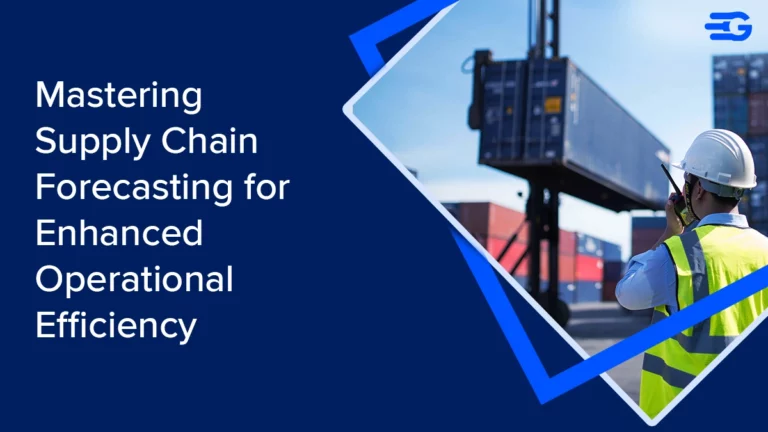Mastering Supply Chain Economics: Unlocking Profitability with Trucking Per Mile Rates
Understanding per-mile rates in trucking is fundamental for both trucking companies and shippers alike. These rates serve as the backbone of the trucking industry, dictating the costs associated with transporting goods from one location to another. For trucking companies, per-mile rates directly impact their profitability and bottom line.
Some of the factors that impact the trucking rates per mile as fuel costs, maintenance expenses, driver wages, insurance premiums, and overhead costs. By accurately assessing these expenses and incorporating them into their pricing structure, trucking companies can establish competitive per-mile rates that cover their operational costs while generating a profit.
For shippers, understanding the nuances of per-mile rates allows them to evaluate the total cost of transportation more comprehensively. Beyond the base rate per mile, shippers may also need to consider additional charges such as fuel surcharges, accessorials, and detention fees.
Additionally, they play a crucial role in determining the pricing structure for shippers. Shippers rely on per-mile rates to budget and plan their transportation expenses, helping them make informed decisions when selecting carriers and shipping routes. Understanding per-mile rates allows shippers to assess the cost-effectiveness of different transportation options and negotiate favorable terms with carriers.
Moreover, per-mile rates provide transparency and clarity in pricing, enabling both trucking companies and shippers to establish fair and equitable agreements. Overall, a thorough understanding of per-mile rates is essential for navigating the complexities of the trucking industry and ensuring efficient and cost-effective transportation of goods.
Calculating Trucking Rates Per Mile
Understanding your cost per mile in trucking is crucial for the success of your business. This metric provides insight into whether you’re charging enough for hauling loads and helps prevent financial losses. For truck drivers, especially owner-operators, miscalculating this figure can lead to instability or bankruptcy. Hence, accurately calculating your cost per mile is vital.
To calculate your cost per mile, consider both fixed and variable costs. Fixed costs like insurance and truck payments remain constant, while variable costs like fuel and maintenance fluctuate based on mileage and load volume. By tracking and dividing these expenses by total miles driven, you can determine your cost per mile.
Using this formula, trucking companies can cover expenses and make a profit. Regularly reviewing and adjusting rates based on market conditions maintains competitiveness and profitability.
Total Fixed Expenses Per Mile+Total Variable Expenses Per Mile
1-Profit Margin Percentage
Key Components of Cost Per Mile
With values of the above formula are governed by several key components that contribute to the overall cost. Understanding these elements is essential for accurately calculating the cost per mile and ensuring profitability in the trucking business.
1. Distance of Travel: The distance between destinations significantly impacts trucking rates per mile. Whether it’s local transportation or over-the-road haulage, ensuring accurate mileage estimation is crucial to avoid surprises and determine the correct per-mile rates. Long detours due to road closures can affect job profitability and timing, leading to changes in the rate per mile for truck drivers.
2. Weight of the Shipment: The weight of the shipment is another critical factor influencing the cost of trucking per mile. Managing the overall weight load for the fleet helps control costs and determine per-mile rates accurately. Factors such as heavy haul rates per mile and FTL (Full Truckload) rates need consideration to answer questions about average freight cost per mile. Starting with slightly higher rates per mile allows room for negotiation while ensuring revenue for the business.
3. Shipment Density: Shipment density determines how much space a shipment occupies in the truck and affects trucking per mile rates. Calculating shipment density involves dividing the cargo weight by its cubic feet. Understanding shipment density helps optimize space utilization and accurately calculate rates per mile.
4. Freight Classification: Freight classification is crucial for determining freight rates per mile. The National Motor Freight Traffic Association (NMFTA) defines 18 classes of shipments based on factors such as product density, value, liability, handling needs, and storability. A thorough understanding of these factors ensures competitiveness and profitability in the trucking business.
While these factors remain effective perennially, the methods and approach to factor them have changed with the advent of logistic management software enabled by automation and AI.
Industry Benchmarks for Trucking Costs
Establishing industry benchmarks for average trucking rates per mile involves analyzing various factors that contribute to the operational costs of trucking. These benchmarks provide valuable insights for fleet managers and trucking companies, helping them understand where they stand relative to industry standards and make informed decisions about pricing and cost management.
One of the key components in determining average trucking rates per mile is the analysis of operational costs. These costs include expenses such as fuel, maintenance, insurance, driver wages, and equipment payments. Researchers can calculate the average costs incurred by trucking companies across different sectors and fleet sizes by examining data from sources like the American Transportation Research Institute (ATRI), industry associations, and government agencies.
Fuel costs play a significant role in establishing industry benchmarks for trucking rates per mile. Fluctuations in fuel prices can have a direct impact on operational expenses, making it essential to monitor fuel consumption and pricing trends. Additionally, factors such as vehicle efficiency, route optimization, and fuel management practices influence fuel expenses and contribute to variations in average fuel costs per mile.
Maintenance and repair costs also contribute to the establishment of industry benchmarks for trucking rates per mile. As vehicles age and undergo wear and tear, maintenance expenses can increase, affecting overall operational costs. By analyzing data on repair and maintenance expenditures from a diverse range of trucking companies, researchers can assess average costs per mile and identify trends in maintenance practices and expenses.
Driver wages and benefits are another crucial factor in determining industry benchmarks for trucking rates per mile. As the demand for qualified drivers continues to rise, wages and benefits play a significant role in operational expenses. By examining data on driver compensation from industry surveys and government reports, researchers can estimate average labor costs per mile and factor them into the overall cost analysis.
Regional Differences in Trucking Rates
Regional differences in trucking rates can be significant and are influenced by various factors. One of the primary determinants of trucking rates is seasonality. Throughout the year, rates fluctuate based on seasonal demand patterns. For instance, after the holiday season in January and February, rates typically drop as demand for capacity decreases. Conversely, unexpected weather events such as snowstorms or hurricanes can disrupt normal freight movements, leading to increased rates and changes in available capacity depending on the affected region.
The location also plays a crucial role in determining trucking rates. Facilities situated along common freight lanes tend to benefit from lower costs because trucks are readily available in those areas, driving competition among carriers. Conversely, areas with limited inbound and outbound freight may experience higher rates as carriers need to cover additional costs to service these less accessible regions.
Furthermore, regional differences in trucking rates can stem from disparities in supply and demand dynamics, infrastructure accessibility, and economic activity. For example, densely populated urban areas with high levels of industrial activity may experience lower trucking rates due to higher demand and competition among carriers. In contrast, rural or remote regions with limited infrastructure and lower freight volumes may face higher rates due to the challenges associated with servicing these areas.
Keeping track of these regional differences has become relatively easy, as the market is now witnessing the emergence of freight market intelligence services.
Currently, GoComet’s Market Intelligence service has garnered an immense reputation for providing comprehensive insights into regional freight rates, market trends, and fluctuations. By leveraging GoComet’s platform, businesses can make informed decisions, optimize their logistics strategies, and stay competitive in the dynamic freight market.
Impact of Fuel Prices on Trucking Rates
The fluctuation of fuel prices has a significant impact on trucking rates, directly influencing the cost per mile for carriers. Fuel costs represent a substantial portion of operating expenses in the trucking industry, and any changes in fuel prices can have ripple effects throughout the supply chain. When fuel prices rise, carriers often pass on these increased costs to shippers through higher trucking rates per mile to maintain profitability. Conversely, when fuel prices decrease, carriers may adjust their rates accordingly to remain competitive.
The effect of fuel prices on trucking rates underscores the importance of efficient fuel management strategies for carriers. By leveraging supply chain visibility software, through supply chain visibility software, companies can track fuel prices in real time and plan routes more efficiently. These tools provide valuable insights into fuel price trends, allowing carriers to optimize their routes to minimize fuel consumption and reduce costs.
Overall, the impact of fuel prices on trucking rates highlights the interconnected nature of the transportation industry and the importance of proactive fuel management strategies.
Strategies to Mitigate Rising Transportation Costs
As transportation costs continue to rise, businesses need to implement strategies to mitigate the impact on trucking rates. One effective approach is to optimize shipping schedules and consolidate shipments whenever possible. By reducing the number of individual shipments and maximizing truck capacity, companies can lower transportation costs per unit and minimize the overall impact of rising rates.
Another strategy is to leverage technology and data analytics to improve efficiency in logistics operations. For example, implementing advanced route planning software can help optimize delivery routes, reduce fuel consumption, and decrease transportation times. Additionally, investing in supply chain visibility tools allows businesses to monitor shipment statuses in real-time, identify inefficiencies, and proactively address issues that could lead to increased costs.
Furthermore, fostering transparent and collaborative relationships with carriers through fair freight negotiations is crucial. By engaging in open communication and establishing mutually beneficial partnerships, businesses can negotiate competitive rates and minimize unnecessary surcharges or fees.
Besides, there are integrated services offered in this ground, by companies like GoComet. GoComet’s Make Freight Bidding Fair For Your Freight Forwarder services offer a transparent and efficient freight bidding platform that ensures fairness for freight forwarders, thus enabling forwarders to access competitive bids, negotiate favorable terms, and streamline their procurement process, ultimately optimizing their logistics operations
Optimizing Your Fleet for Better Rates
Optimizing your fleet is essential for securing better trucking rates in today’s competitive market. One tip for fleet optimization is to invest in fuel-efficient vehicles and technologies. By upgrading to vehicles with better fuel economy or implementing fuel-saving technologies like aerodynamic enhancements and idle reduction systems, you can reduce fuel consumption and lower operating costs, ultimately leading to more competitive rates and sustainable supply chain management.
Additionally, adopting route optimization strategies can maximize efficiency and minimize empty miles. Utilizing route planning software and GPS tracking systems allows you to plan the most efficient routes, avoid traffic congestion, and reduce overall mileage, which can translate to lower transportation costs and more competitive rates for your services.
Another aspect of fleet optimization is proper maintenance and vehicle management. Regular maintenance checks, tire inspections, and vehicle repairs help ensure that your fleet operates at peak performance, reducing the risk of breakdowns and costly repairs while maximizing fuel efficiency and reliability.
Moreover, implementing telematics systems and driver monitoring tools can provide valuable insights into driver behavior and performance. By promoting safe driving practices, minimizing idle time, and optimizing driver routes, you can further enhance efficiency and reduce operational costs, ultimately leading to more competitive trucking rates.
Furthermore, adopting sustainable practices in your fleet operations not only reduces environmental impact but can also yield cost savings and competitive advantages. Practices such as vehicle electrification, alternative fuels, and efficient load consolidation not only reduce emissions but can also lower fuel costs and improve overall operational efficiency.
By implementing these fleet optimization strategies, including investing in fuel-efficient technologies, adopting route optimization, prioritizing maintenance, and embracing sustainable practices, you can position your fleet for better rates and long-term competitiveness in the trucking industry.
Technological Advancements and Trucking Rates
Technology has revolutionized the trucking industry, offering innovative solutions to improve route planning and cost calculations, ultimately impacting trucking rates. One significant advancement is the development of route optimization software, which leverages advanced algorithms to identify the most efficient transport routes. These tools take into account factors such as traffic patterns, road conditions, and delivery schedules to minimize travel time and fuel consumption, thereby reducing operational costs and improving overall efficiency.
Moreover, technology plays a crucial role in cost calculations by providing real-time data and analytics to fleet managers. With the advent of fleet management software fleet operators can accurately track expenses, monitor fuel consumption, and analyze driver performance. By leveraging this data, companies can identify cost-saving opportunities, optimize resource allocation, and make informed decisions to maximize profitability.
Additionally, technology enables dynamic pricing strategies based on market demand and supply conditions. Advanced freight rate calculators utilize machine learning algorithms and historical data to predict market trends and adjust pricing accordingly. This flexibility allows companies to remain competitive while ensuring optimal profitability.
Furthermore, telematics systems and GPS tracking devices enable real-time monitoring of vehicles, allowing fleet managers to proactively address issues such as route deviations, vehicle breakdowns, and driver inefficiencies. By proactively managing fleet operations, companies can minimize disruptions, improve customer satisfaction, and reduce overall transportation costs.
Conclusion: Steering Towards Cost-Effective Trucking
In the competitive landscape of the trucking industry, accurate rate calculation and effective cost management are paramount for the success and sustainability of businesses. By diligently assessing expenses and calculating rates based on both fixed and variable costs, trucking companies can ensure profitability while remaining competitive in the market. Efficient cost management practices, coupled with the utilization of advanced technology and strategic optimization of fleet operations, enable businesses to navigate challenges such as fluctuating fuel prices, seasonal demand variations, and evolving market dynamics.
Moreover, by embracing innovative solutions like GoComet’s GoTrack tool and leveraging expert advice from industry leaders, trucking businesses can streamline operations, optimize route efficiency, and enhance overall performance. The ability to make data-driven decisions, proactively address challenges, and adapt to changing market conditions is essential for long-term success in the trucking industry. Therefore, prioritizing accurate rate calculation and cost management is not only a business imperative but also a strategic necessity for steering toward cost-effective and sustainable trucking operations.






